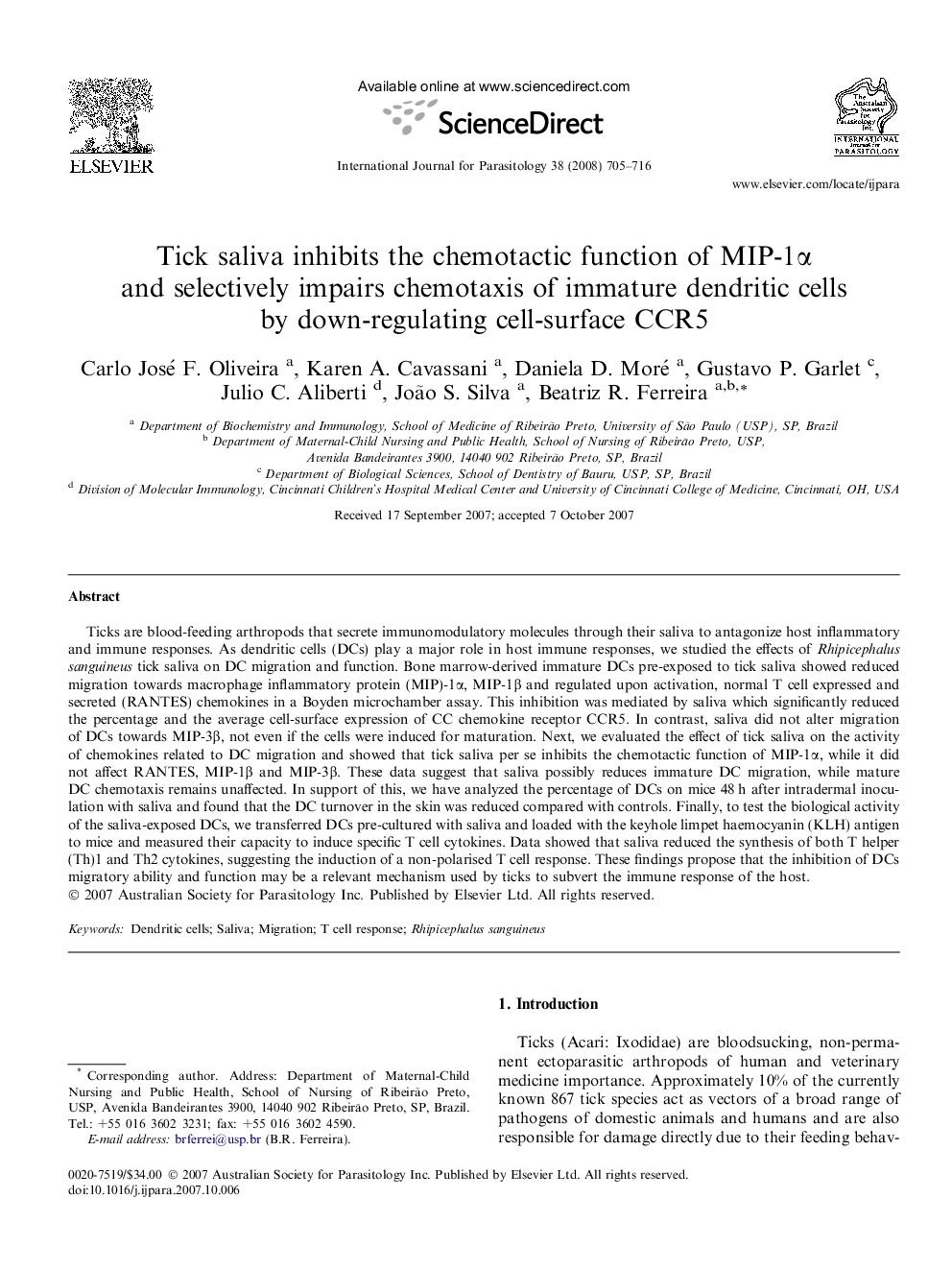| کد مقاله | کد نشریه | سال انتشار | مقاله انگلیسی | نسخه تمام متن |
|---|---|---|---|---|
| 10972869 | 1107334 | 2008 | 12 صفحه PDF | دانلود رایگان |
عنوان انگلیسی مقاله ISI
Tick saliva inhibits the chemotactic function of MIP-1α and selectively impairs chemotaxis of immature dendritic cells by down-regulating cell-surface CCR5
دانلود مقاله + سفارش ترجمه
دانلود مقاله ISI انگلیسی
رایگان برای ایرانیان
کلمات کلیدی
موضوعات مرتبط
علوم زیستی و بیوفناوری
ایمنی شناسی و میکروب شناسی
انگل شناسی
پیش نمایش صفحه اول مقاله

چکیده انگلیسی
Ticks are blood-feeding arthropods that secrete immunomodulatory molecules through their saliva to antagonize host inflammatory and immune responses. As dendritic cells (DCs) play a major role in host immune responses, we studied the effects of Rhipicephalus sanguineus tick saliva on DC migration and function. Bone marrow-derived immature DCs pre-exposed to tick saliva showed reduced migration towards macrophage inflammatory protein (MIP)-1α, MIP-1β and regulated upon activation, normal T cell expressed and secreted (RANTES) chemokines in a Boyden microchamber assay. This inhibition was mediated by saliva which significantly reduced the percentage and the average cell-surface expression of CC chemokine receptor CCR5. In contrast, saliva did not alter migration of DCs towards MIP-3β, not even if the cells were induced for maturation. Next, we evaluated the effect of tick saliva on the activity of chemokines related to DC migration and showed that tick saliva per se inhibits the chemotactic function of MIP-1α, while it did not affect RANTES, MIP-1β and MIP-3β. These data suggest that saliva possibly reduces immature DC migration, while mature DC chemotaxis remains unaffected. In support of this, we have analyzed the percentage of DCs on mice 48 h after intradermal inoculation with saliva and found that the DC turnover in the skin was reduced compared with controls. Finally, to test the biological activity of the saliva-exposed DCs, we transferred DCs pre-cultured with saliva and loaded with the keyhole limpet haemocyanin (KLH) antigen to mice and measured their capacity to induce specific T cell cytokines. Data showed that saliva reduced the synthesis of both T helper (Th)1 and Th2 cytokines, suggesting the induction of a non-polarised T cell response. These findings propose that the inhibition of DCs migratory ability and function may be a relevant mechanism used by ticks to subvert the immune response of the host.
ناشر
Database: Elsevier - ScienceDirect (ساینس دایرکت)
Journal: International Journal for Parasitology - Volume 38, Issue 6, May 2008, Pages 705-716
Journal: International Journal for Parasitology - Volume 38, Issue 6, May 2008, Pages 705-716
نویسندگان
Carlo José F. Oliveira, Karen A. Cavassani, Daniela D. Moré, Gustavo P. Garlet, Julio C. Aliberti, João S. Silva, Beatriz R. Ferreira,